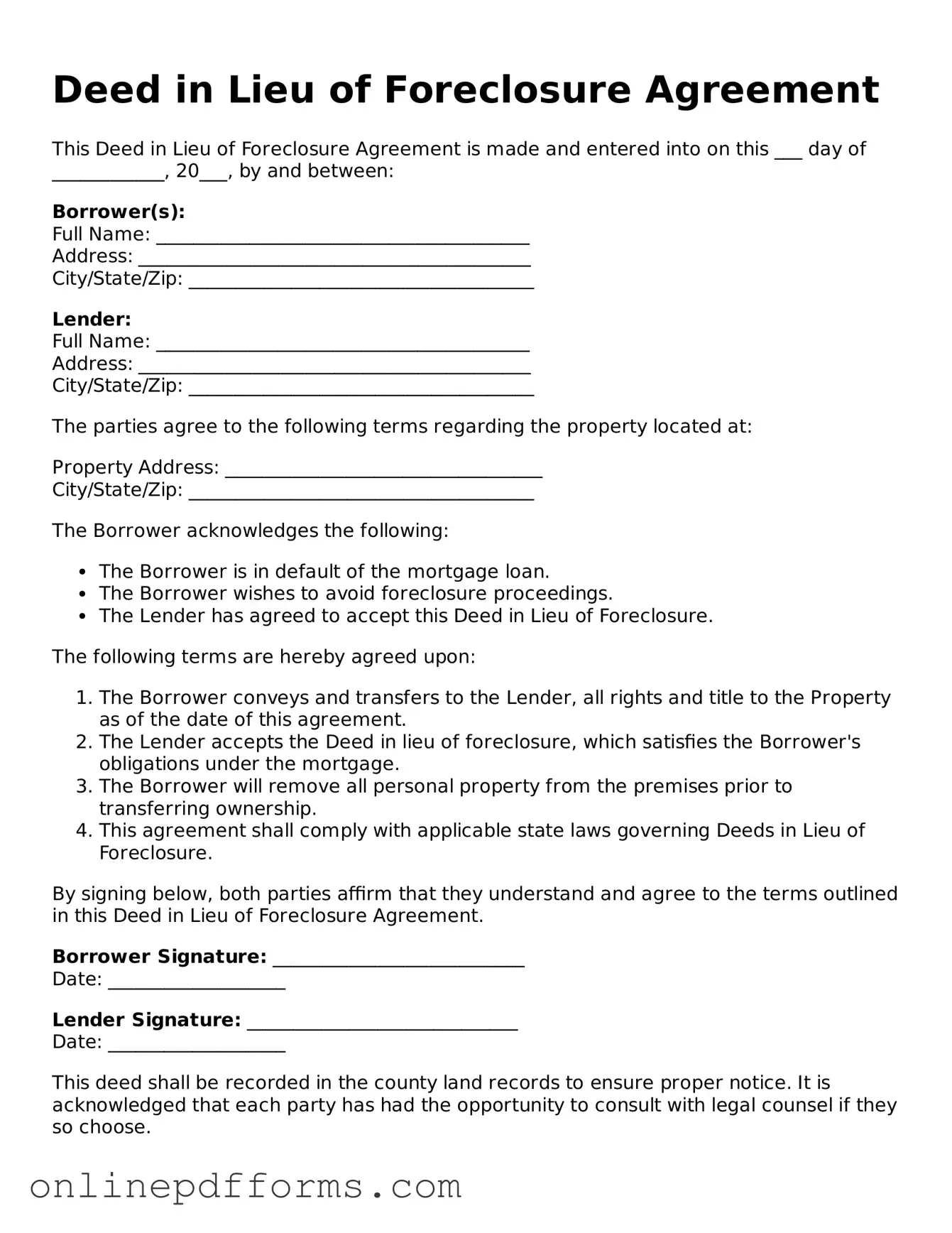A short sale agreement is similar to a Deed in Lieu of Foreclosure in that both involve the transfer of property ownership to the lender to avoid foreclosure. In a short sale, the homeowner sells the property for less than the amount owed on the mortgage, with the lender’s approval. This process allows the homeowner to mitigate financial losses while also providing the lender with a way to recover some of their investment without going through the lengthy foreclosure process.
A loan modification agreement also shares similarities with a Deed in Lieu of Foreclosure. In this case, the lender and borrower agree to change the terms of the existing loan, such as the interest rate or payment schedule, to make it more manageable for the borrower. While a Deed in Lieu involves relinquishing the property, a loan modification seeks to keep the homeowner in their home by making the mortgage more affordable, thereby avoiding foreclosure altogether.
The Quitclaim Deed form, accessible at arizonaformspdf.com, is an essential tool for property owners wishing to transfer ownership without any guarantees about the title's condition, making it a valuable resource in various real estate transactions.
A foreclosure settlement agreement can be compared to a Deed in Lieu of Foreclosure as both aim to resolve the issue of mortgage default. In a settlement agreement, the lender and borrower negotiate terms that may include a payment plan or a one-time payment to settle the debt. This approach can prevent foreclosure and allow the borrower to retain ownership of the property, unlike a Deed in Lieu where ownership is transferred to the lender.
A forbearance agreement is another document that bears resemblance to a Deed in Lieu of Foreclosure. This arrangement allows the borrower to temporarily pause or reduce mortgage payments for a specified period. During this time, the lender agrees not to initiate foreclosure proceedings. The goal is to provide the borrower with relief while they regain financial stability, contrasting with the immediate transfer of property in a Deed in Lieu.
An assumption of mortgage agreement is similar in that it involves the transfer of mortgage responsibility, but it allows a third party to take over the mortgage payments. The original borrower remains liable for the loan, while the new borrower assumes the payments. This can be a viable alternative to a Deed in Lieu, as it keeps the original borrower from losing their property entirely.
A quitclaim deed is also comparable to a Deed in Lieu of Foreclosure, as both involve the transfer of property rights. However, a quitclaim deed is often used between family members or in divorce situations to transfer ownership without a financial transaction. While it may not directly address mortgage default, it can be part of a strategy to resolve property ownership issues, similar to how a Deed in Lieu resolves mortgage default by transferring ownership to the lender.
A bankruptcy filing can relate to a Deed in Lieu of Foreclosure in that both can provide relief from overwhelming debt. In bankruptcy, the borrower seeks legal protection from creditors, which may include their mortgage lender. While bankruptcy can lead to the discharge of debts, a Deed in Lieu allows the borrower to relinquish the property to the lender as a means of avoiding foreclosure, providing a different but effective route to financial relief.
Lastly, a property settlement agreement in a divorce can be likened to a Deed in Lieu of Foreclosure. This document outlines how marital property will be divided, which may include transferring ownership of a home. While a Deed in Lieu is focused on resolving mortgage default, both documents facilitate the transfer of property rights, often in challenging financial circumstances.
